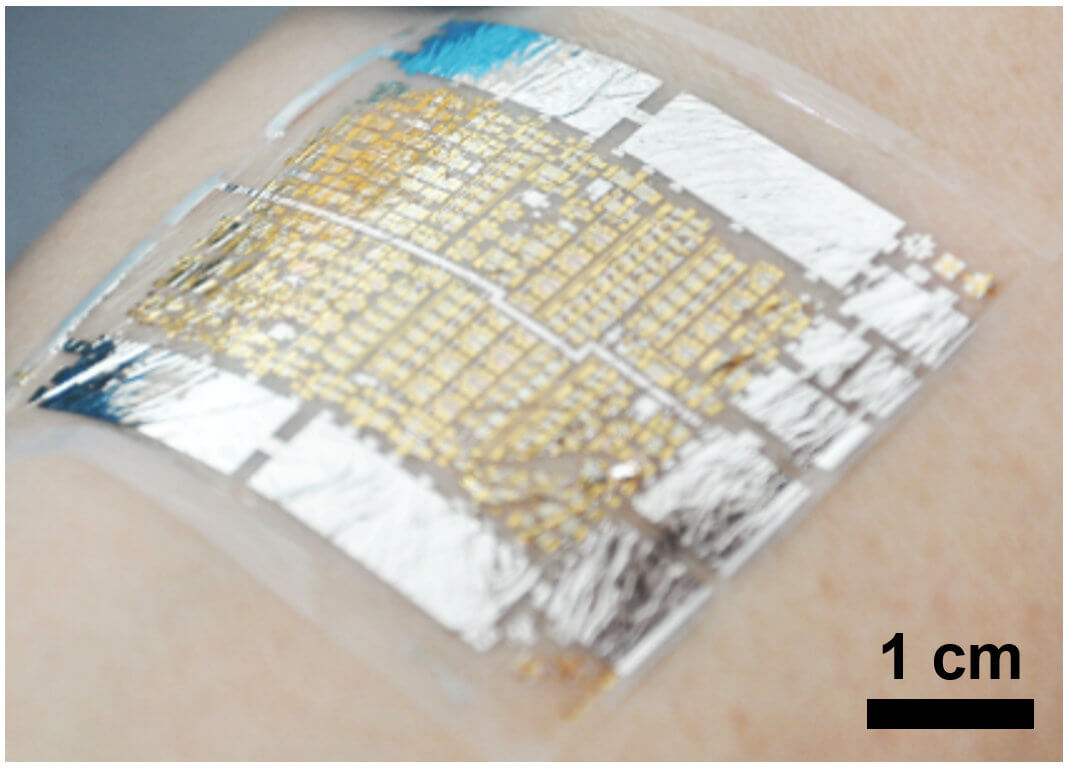
Photograph of the sheet-type piezoelectric system. Accurate biomonitoring is possible without being noticed; the ultrathin and soft sheet system realizes attachment of the device to the skin. (Osaka University)
OSAKA, Japan — Wearable tech fanatics rejoice: a high-tech patch that monitors the heart and other health metrics — and never needs charging — has been created by Japanese scientists. The ultra-thin wearable monitors vital signs and is equipped with tiny generators so it never runs out of juice.
Wearable technology and smart sensors have become increasingly popular over the past decade, but one of the challenges has been coming up with a way of powering all these gadgets without the inconvenience of using wires or batteries. Now, researchers at Osaka University in Japan have come up with a wireless and battery-less solution.
The patches, no bigger than a small sticky plaster, could help doctors monitor the health of their patients on a daily basis. Researchers say the problem with wearable technology is the ability to keep them powered for long periods of time. This groundbreaking tech could change everything.
“Our e-health patches may be employed as part of screening for lifestyle-related diseases such as heart disorders, signs of stress, and sleep apnea,” explains first author Dr. Andreas Petritz, in a statement.
The researchers used what’s known as a ferroelectric substance, which can power itself from normal movement — the piezoelectric effect. This is because the substance contains crystals that can be made to spontaneously have both a positive and negative charge. The researchers applied a strong electric current to a small amount of the material, just one micron thick. The material was very efficient at converting natural motion into small electric voltages, the researchers found.
These currents could either be transformed into signals for medical sensors or used to harvest energy. Multilayer patches could harvest up to 200 millijoules per day from a person’s natural movement if placed on a joint, like knees and elbows, the researchers say. This is enough power to monitor a patient’s cardiovascular parameters several times a day.
Also, because the patches are so thin, they are barely visible, making daily health monitors less invasive and unpleasant. “We expect that our findings will assist in the development of other sheet-type sensor systems that can perform precise bio-monitoring when affixed to the skin surface,” says study senior author Professor Tsuyoshi Sekitani.
The technology could even be monitored via smartphone or computer, the authors say.
The findings are published in the journal Nature Communications.
SWNS writer Tom Campbell contributed to this report.










